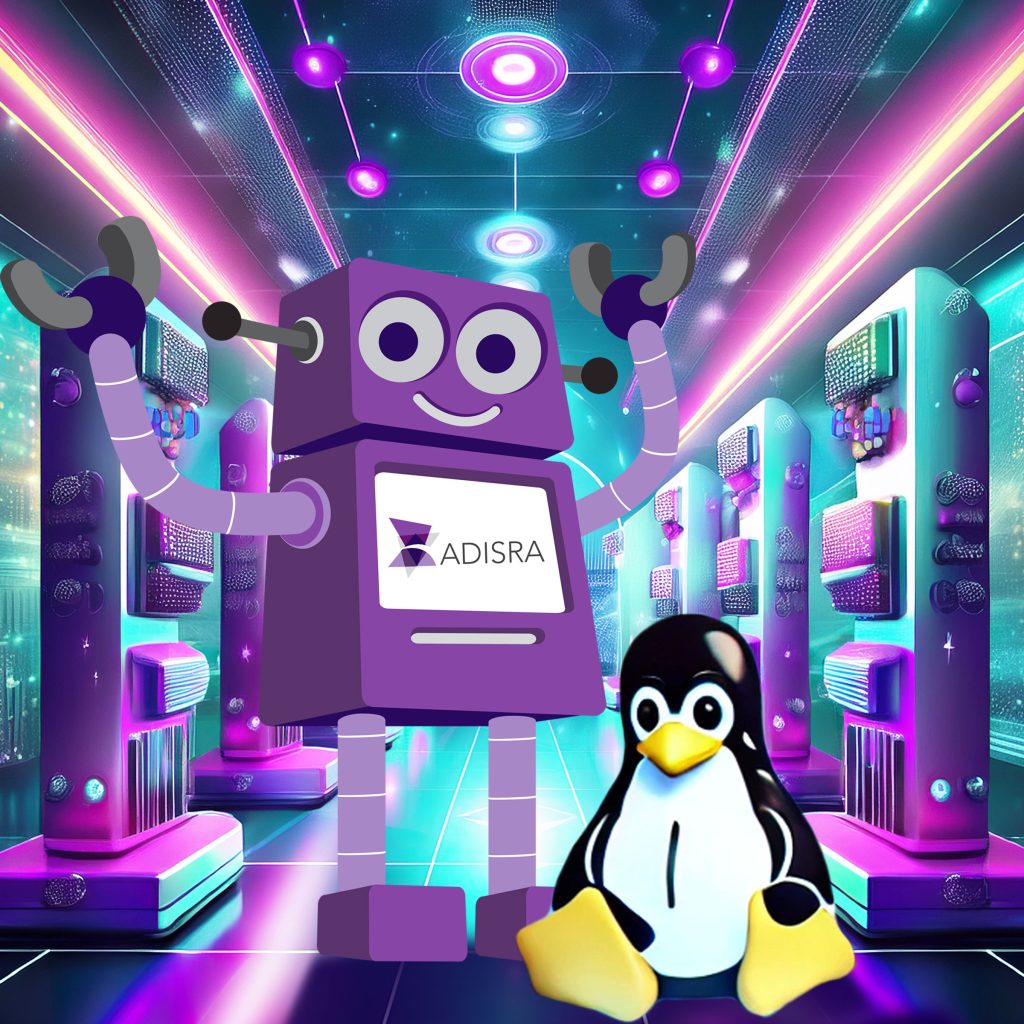
Earlier this week, Linux quietly celebrated its 34th birthday, a milestone for a technology that underpins much of the modern world. What began in 1991 as a modest Usenet post by Linus Torvalds has become one of the most influential software projects in history. At the time, Torvalds described it as “just a hobby,” yet Linux quickly grew into something far greater: a system defined by portability, adaptability, and resilience.
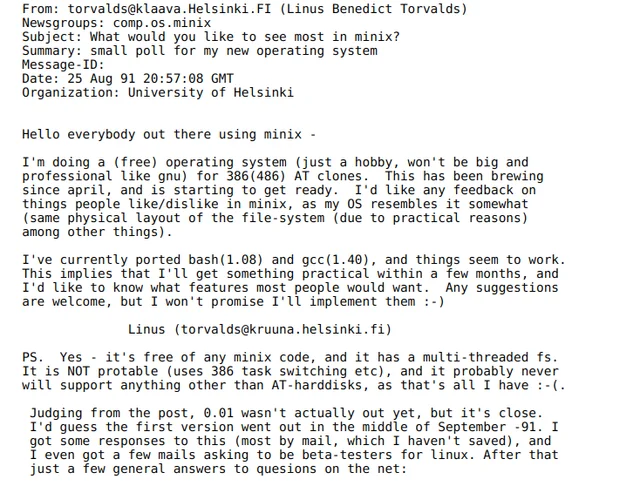
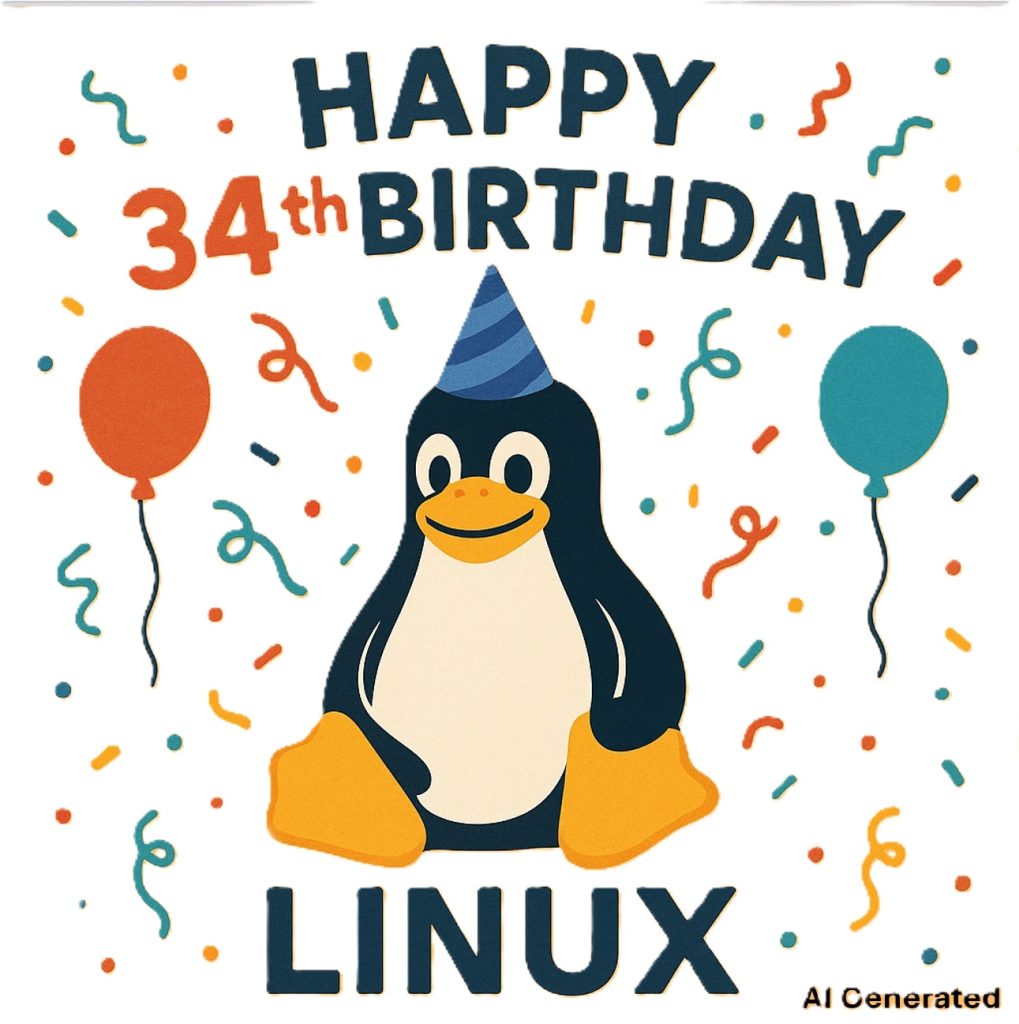
From its earliest kernel experiments on Intel processors to its current role as the backbone of servers, mobile devices, and industrial systems, Linux is a story of collaboration and innovation.
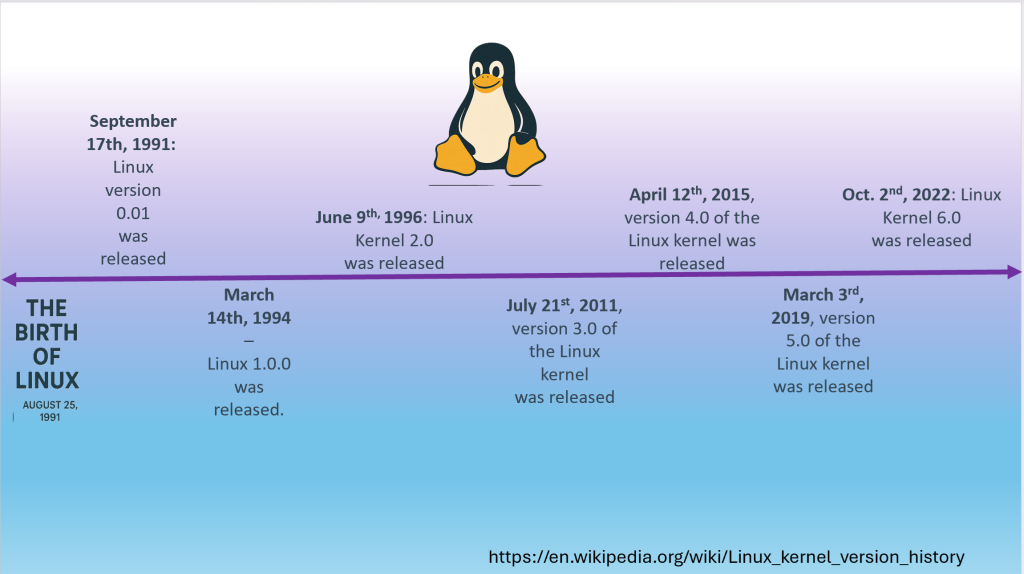
The Early Foundations
Linux’s momentum accelerated when developers worldwide began contributing to the project. By 1994, Torvalds released Linux 1.0, the first stable version, paving the way for broader adoption.
The GNU Project, launched by Richard Stallman in 1983, provided the missing pieces of a free UNIX-like operating system. Tools such as the GNU Compiler Collection (GCC) and GNU Debugger (GDB) gave Linux a complete toolkit, while the Free Software Foundation, founded in 1985, established the “four freedoms” of free software: the right to use, study, modify, and share programs.
Together, Linux and GNU created the foundation for a truly open and flexible operating system, ready to move beyond academia into mainstream adoption.
The Rise of Distributions and Adoption
As the foundation matured, Linux distributions emerged, including Slackware, Debian, and Red Hat among the earliest. These packaged versions made Linux more accessible, while universities exposed new generations of students to open-source thinking (read more about Linux variants in our previous blog here).
That combination of academic influence, open collaboration, and unmatched flexibility helped establish Linux as one of the most impactful operating systems of all time.
From Student Project to Industrial Standard
The same openness that drove early adoption now powers Linux’s role in industrial automation. As manufacturers face rising demands for connectivity, cybersecurity, and real-time performance, Linux offers a scalable, proven foundation.
Its versatility allows it to run on edge devices, controllers, and even full-scale SCADA systems. With enhancements like the PREEMPT_RT kernel patch for real-time precision, Linux has moved from being an experiment to an industrial standard, well-positioned for the next wave of digital transformation.
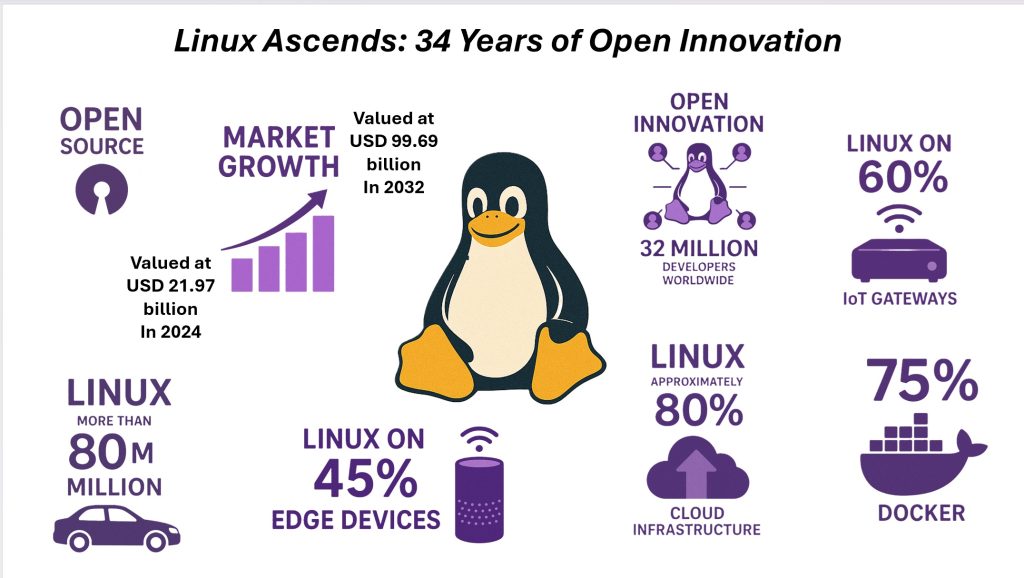
The Scale of Linux Today
Market Growth: Valued at USD 21.97 billion in 2024, the Linux OS market is projected to reach USD 99.69 billion by 2032 (Fortune Business Insights).
Developer Community: Over 32 million developers worldwide contribute to Linux projects (Market Report World).
Cloud & Containers: Roughly 80% of cloud infrastructure and 75% of Docker containers rely on Linux.
Edge & IoT: Approximately 45% of edge devices and nearly 60% of IoT gateways rely on Linux.
Automotive: More than 80 million vehicles use Linux-based infotainment or telematics systems.
These numbers highlight both its reach and its reliability across industries.
Strengths and Challenges
Linux’s flexibility remains its greatest strength. Developers can tailor lean, efficient distributions optimized for industrial environments, enabling faster boot times, lower resource use, and task-specific optimization. Containerization tools, such as Docker, further enhance security and reliability by isolating critical applications.
Yet growth brings challenges. In 2024 alone, more than 3,329 Linux vulnerabilities were documented. Constant monitoring, patching, and strong cybersecurity practices are essential to safeguard the ecosystem that powers so much of the digital and industrial world.
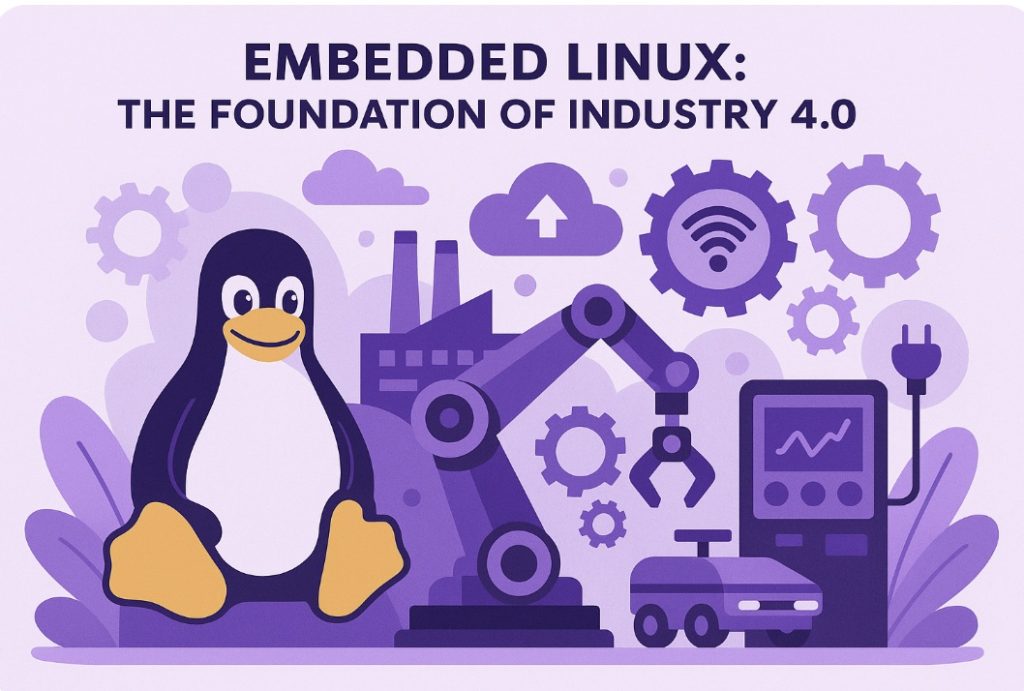
AI Generated
Embedded Linux: The Foundation of Industry 4.0
Industry 4.0, first introduced at the Hannover Fair in 2011, symbolizes the shift to smart, connected manufacturing. At its core is the move from proprietary platforms to open, interoperable ones. Linux, particularly embedded Linux with real-time capabilities, is now a critical enabler.
Why Linux for Industry 4.0?
– Adaptability and scalability: Supports everything from industrial controllers to PCs.
– Community-driven innovation: Continuous updates and global collaboration.
– Real-time performance: PREEMPT_RT and similar patches enable deterministic responses.
– Cost efficiency: Open-source model reduces licensing costs while ensuring sustainability.
Key Industrial Applications:
– Industrial IoT Gateways: Securely bridge legacy equipment with modern networks.
– Robotics & Automation: Real-time motion control, AI/ML, and seamless communication.
– Smart HMIs: Rich graphics, multi-language support, and remote access.
– Predictive Maintenance: Embedded analytics detect failures before they happen.
Security, Connectivity, and Scalability
As industrial networks expand, embedded Linux supports:
– Secure boot, encryption, and access control.
– Interoperability with MQTT, OPC UA, and Modbus.
– Scalable deployment across heterogeneous environments.
This makes Linux a cornerstone for secure, future-ready Industry 4.0 systems.
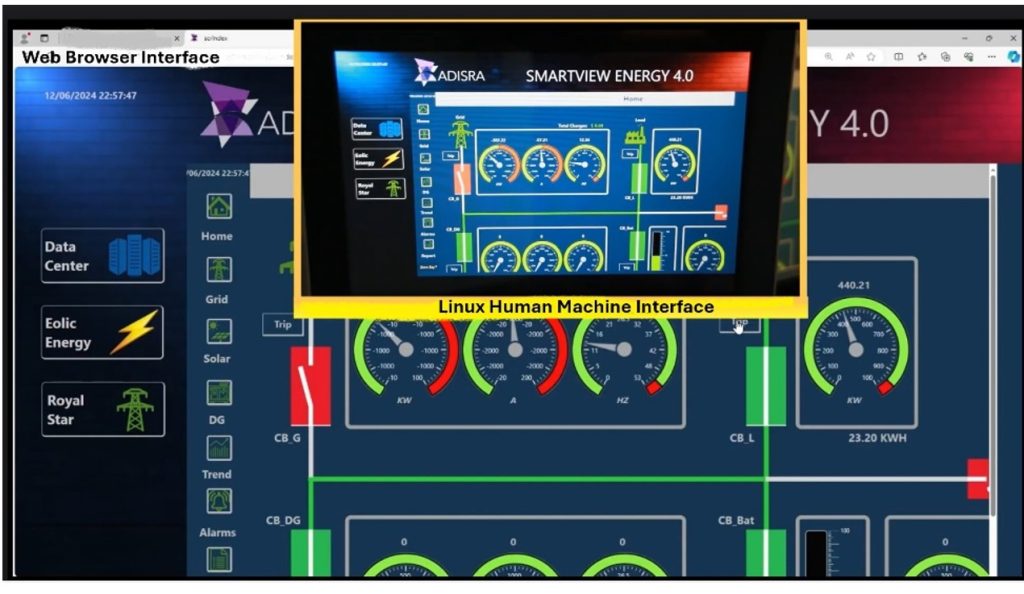
ADISRA SmartView Linux Runtime: Seamless HMI/SCADA for the Edge
Industrial automation is evolving, and so are the platforms that power it. While Windows still dominates desktops, Linux is becoming the preferred OS for edge and embedded environments thanks to its stability, scalability, and flexibility.
– Best of Both Worlds: ADISRA SmartView for Linux lets engineers design HMI/SCADA applications in the familiar Windows environment, then deploy them seamlessly to Linux runtimes.
– Simplified Remote Management: Built-in tools allow licensing, application transfers, process control, and monitoring.
– Runs Where You Need It: Supports Ubuntu, Debian, Red Hat, Alpine, and Mint, with applications running locally, headless, or via any HTML5 browser.
– Ready for Industrial Protocols: Support for Allen-Bradley, BACnet, Modbus, MQTT, OPC UA, and more ensures smooth integration across plant systems.
The result is a reliable and flexible runtime designed for Industry 4.0.
Start building intelligent industrial automation solutions today with ADISRA SmartView; download it here.
Have a project in mind? Let us talk. Click this link to request a personalized demonstration with our team.
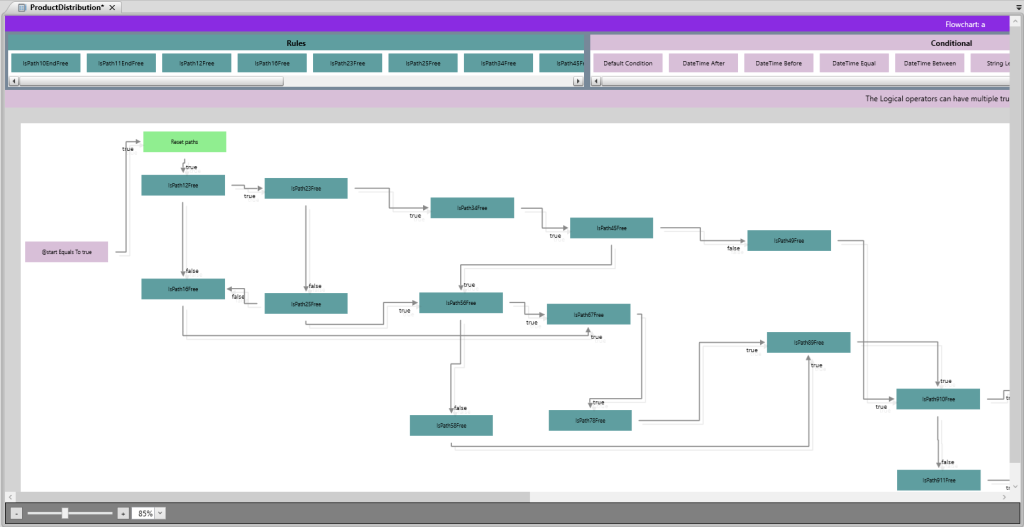
Looking Ahead
From its humble beginnings as a hobby project to its role as the backbone of modern computing, Linux has never stopped evolving. Its story illustrates the power of openness and collaboration, and its future lies at the heart of industrial innovation.
With ADISRA SmartView for Linux, manufacturers gain a future-ready platform that unites reliability, scalability, and flexibility for the edge. As industry embraces digital transformation, Linux stands ready, not just as an operating system, but as a foundation for intelligent automation.
Don’t miss the opportunity to explore how ADISRA SmartView for Linux can transform your operations. Download a trial today and take the first step toward a smarter, more efficient automation journey.
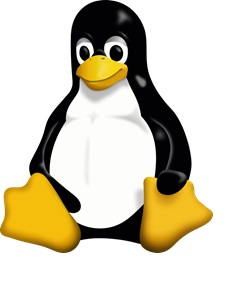
A user’s question:
Question: Is Tux also 34?
Tux, the beloved penguin mascot of the Linux kernel, was created in 1996, making him 29 years old in 2025. The idea originated from Linux creator Linus Torvald, who sought something fun and approachable to represent the operating system. His inspiration struck after being bitten by a Little Penguin during a visit to the National Zoo & Aquarium in Canberra, Australia, and later seeing penguin images online that captured just the right mix of charm and humor.
Larry Ewing brought the concept to life using version 0.54 of GIMP, one of the earliest free software graphics programs. Released under a permissive license, his design quickly became the enduring symbol of Linux.
The name “Tux” was suggested by James Hughes, who explained it as shorthand for “(T)orvalds (U)ni(X)”, with a nod to the penguin’s tuxedo-like coloring. Alan Cox also helped refine the mascot concept, and Torvalds himself encouraged the playful, slightly plump penguin look, describing it as a bird “sitting down after a great meal.”
Although Tux is technically the mascot rather than the official logo, he has become one of the most recognizable symbols in the open-source world. For nearly three decades, Tux has embodied the spirit of Linux: approachable, resilient, and a little unconventional, just like the community that built it.
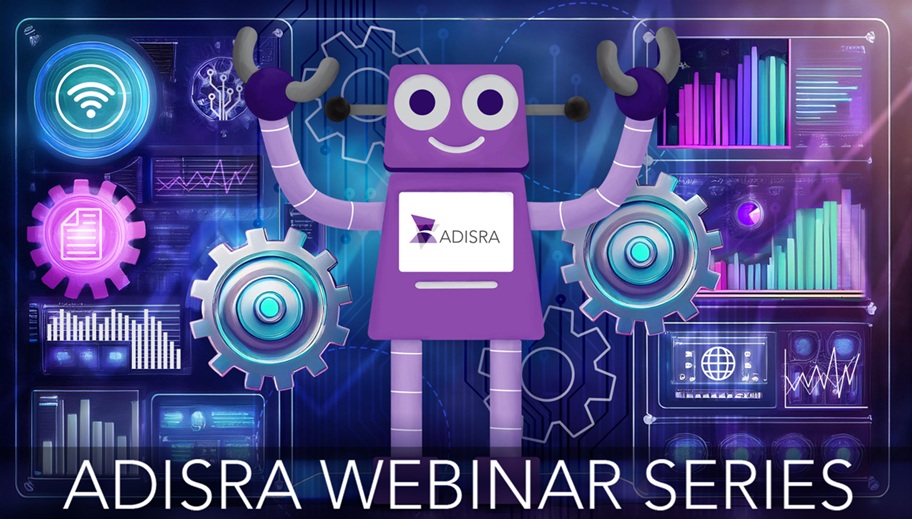
ADISRA Webinar Series:
Just a friendly reminder that the ADISRA webinar series will be taking a break this August. We will be back with fresh and exciting webinars on September 25th at 9:30 a.m. CDT. We look forward to seeing you then!
The Linux Foundation and the Linux Foundation logo design are registered
trademarks of The Linux Foundation. Linux is a registered trademark of Linus
Torvalds.
Tux, the Linux kernel penguin mascot, was created by Larry Ewing in 1996
[lewing@isc.tamu.edu] using the GIMP [www.gimp.org] and is not owned by The
Linux Foundation.
ADISRA®, ADISRA’s logo, InsightView®, and KnowledgeView® are registered trademarks of ADISRA, LLC.
Copyright
© 2024 ADISRA, LLC. All Rights Reserved.
